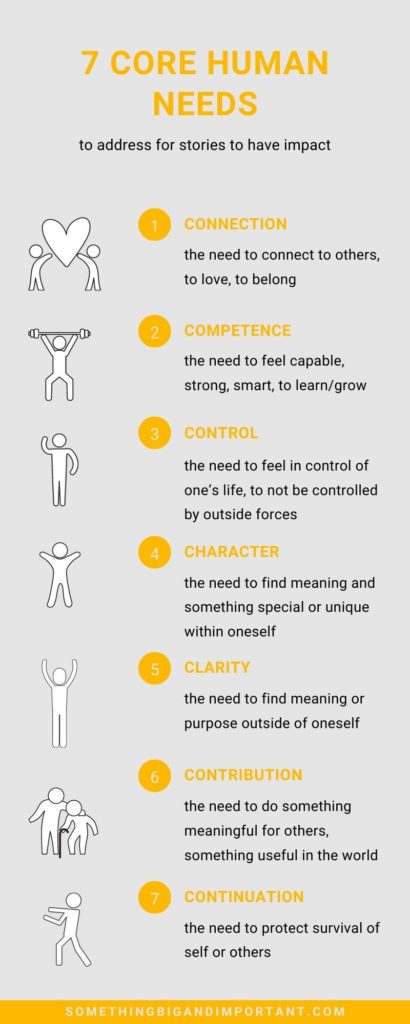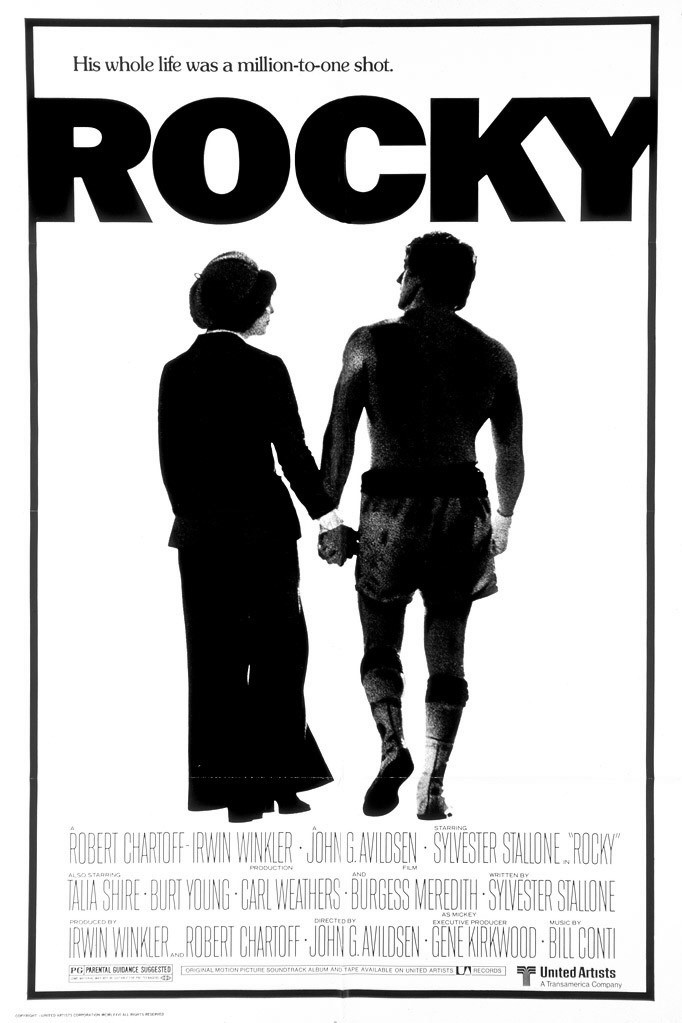One of my favorite lines in all of film is one from ROCKY (1976) when the title character is explaining what he sees in his love interest Adrian and in their relationship together:
“She’s got gaps, I’ve got gaps, together we fill gaps.”
I believe that line also nicely introduces the topic of this post about the necessity of addressing core human needs to create films that engage and impact lives for the better.
All humans have a shared set of needs. At any given time we struggle to meet one or more of those needs. Great stories, great films, can help us clarify possible solutions to unmet needs. They can help us find ways to fill “gaps” in our lives.
Which brings us back to our evolving theory of story engagement and impact and the central role of core human needs in that theory.
Like the principle of impactful films needing to feel real, relevant, and “rightable”, this human needs component of the theory draws from psychological frameworks and research of others (e.g., Coles, 1991; Csikszentmihalyi, 1993; Erikson, 1950; Kotre, 1984; Maslow, 1954; Ryan & Deci, 2000) along with insights from some of my own research and reflection.
Theory Principle #2: A story will engage and impact an individual to the extent it can help him/her meet one or more of 7 core human needs including…

Returning to ROCKY (1976), I’d suggest the lead human need addressed for the three primary characters (Rocky, Adrian, Mickey), and for us as audience members, is competence (not feeling like a “bum” or a “loser”) with a second addressed need of connection (between Rocky and Adrian, between Rocky and Mickey). Incidentally, I find the poster for this film does fantastic job of conveying these dual struggles and needs.

These are common, universal human needs that individuals often struggle to meet. ROCKY provides a story that addresses these core needs, and the interplay between the needs, from multiple perspectives without cluttering with other extraneous stuff or without crowding by trying to do too much.
Over the next several posts, I plan to review other films, the research conducted to develop them, and the needs they may (and may not) address.
References
Coles, R. (1991). The spiritual life of children. Houghton Mifflin Company.
Csikszentmihalyi, M. (1993). The evolving self: A psychology for the third millennium. HarperCollins.
Erikson, E. (1950). Childhood and society. WW Norton & Company.
Kotre, J. N. (1984). Outliving the self: Generativity and the interpretation of lives. Johns Hopkins University Press.
Maslow, A. H. (1954). Motivation and personality. New York: Harper and Row.
Ryan, R.M., & Deci, E.L. (2000). Self-determination theory and the facilitation of intrinsic motivation, social development, and well-being. American Psychologist, 55(1):68-78.

Leave a Comment